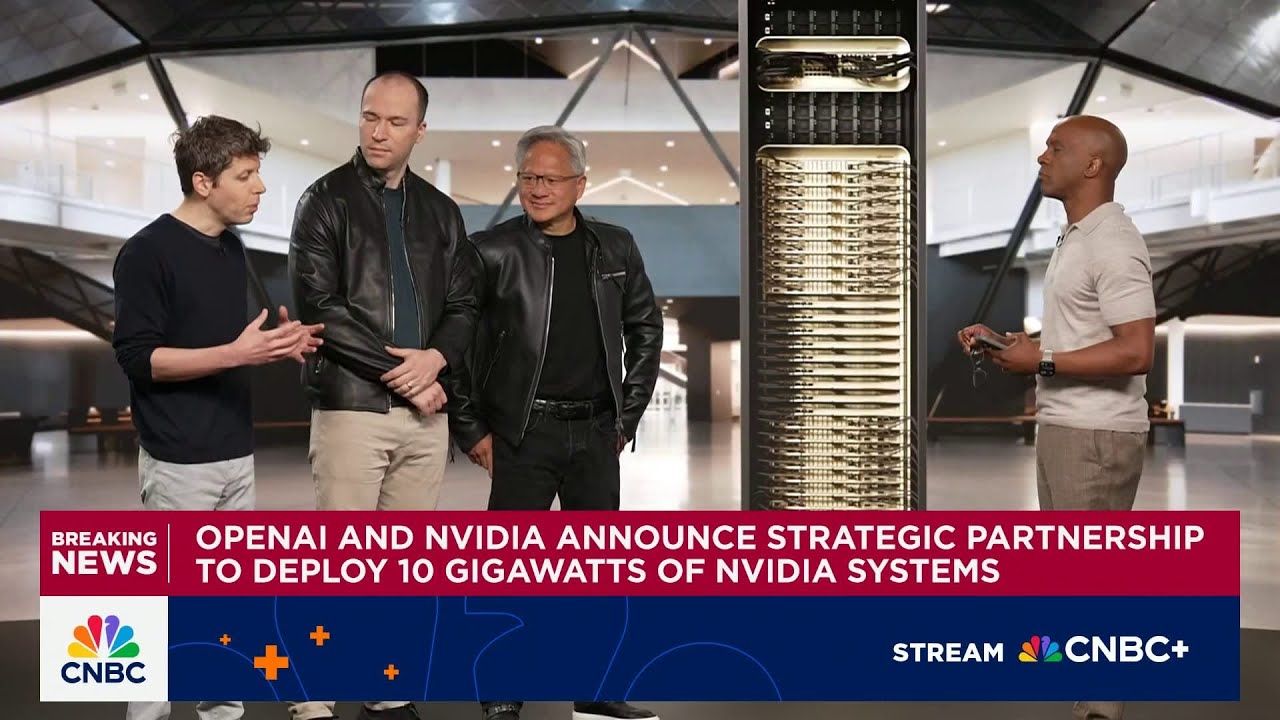Your cart is currently empty!
now who can fill us in with more? John. What do we know? >> Scott Wapner thank you. I am here.
>> At Nvidia headquarters in Santa Clara with the CEO of the world’s most valuable company and the CEO and president of the world’s most valuable private company, Jensen Huang of Nvidia, Sam Altman and Greg Brockman of Open AI. So let’s dive right in to the news. Jensen Nvidia is making $100 billion investment in OpenAI and working together to build out. I think you’re saying ten gigawatts of capacity over several years. The investment is going to come with the gigawatts one at a time.
You’re telling me, you guys, as quickly as you guys can get it done? Jensen, first of all, set the stage. Why? This is the biggest AI infrastructure project. >> In history.
>> This is the largest computing project in history. Well, the reason for that is because computing demand is going through the roof for OpenAI. You know, ChatGPT is the single most revolutionary AI project in the history. It’s being used everywhere, every industry, every country, every person practically that I know uses ChatGPT. The computing demand is going through the roof.
And so this partnership is about building an AI infrastructure that enables AI to go from the labs into the world. This is about the AI industrial revolution arriving. It’s a very big deal.
>> $100 billion, a lot of money. Sam.
Greg, you guys are used to dealing with a lot of money in big projects. So, Sam, I think it was just eight months and a day ago, the initial Stargate announcement, talking about the overall move that OpenAI is making in building out this capacity. Where does this fit? So. >> As Jensen said, building this infrastructure is critical to everything we want to do without without doing this, we cannot deliver the services people want.
We can’t keep making better models. And now that we really see what’s on the near-term horizon of how good the models are getting and the new use cases that are being enabled, what people want to do. This is like the fuel that we need to drive improvement to drive, drive better models, to drive revenue, everything. So this is this is helping us get to a world along with our partners at Stargate, Microsoft, Oracle, where we can build out increasing amounts of infrastructure to deliver on what the world is demanding.
Out of these services.
There’s like no partner but Nvidia that could do this at this kind of scale, this kind of speed. It’s really quite, quite incredible. But this will this will expand on the Stargate ambitions and let us push further and further. We have found every step along the way that we did not quite set our sights big enough, given the market demand. So this will help us push towards that next level, the compute constraints that the whole industry has been in, our company in particular, have been terrible.
We’re so limited right now in the services we can offer. There’s so much more demand than what we can do. And as we look forward in another year or two years, if you have, you know, let’s say it takes ten gigawatts of compute or five gigawatts of compute, you could choose one of two things. You could choose to cure cancer by doing a bunch of having I do a bunch of research, or you could choose to offer free education to everybody on earth. No one wants to make that choice.
And so increasingly as we see this, the answer is just much more capacity so that we can serve the massive needs and opportunity with this.
>> Greg, one way of measuring that demand is the number of users that OpenAI has, ChatGPT says somewhere between 700 and 800 million. How quickly are you growing? What’s the technology that you guys need to bring to bear from Nvidia included in order to satisfy that? >> Yeah, so 700 million growing extremely quickly.
I think that ChatGPT has grown from nothing to that scale, and it continues to grow faster than any product in history. And really, the reason we were able to make this breakthrough and serve it to the extent that we have, is by leveraging Nvidia’s platform, like we’ve worked together very closely since Jensen actually hand-delivered a server to us back in 2016, and we were just doing some math earlier. I think that this deal is really for like a billion times more computational power than that initial server. And so we’re able to actually create new breakthroughs, new models, to be able to be able to actually solve problems like create cures for diseases, and to.


Leave a Reply